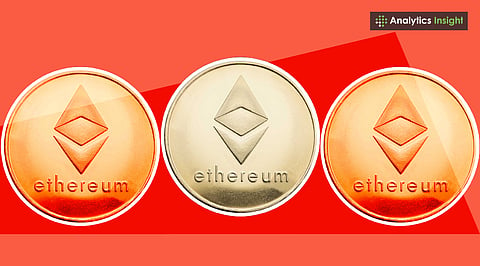

Grayscale has launched staking for its Ethereum ETFs, ETHE and ETH, locking in 32,000 ETH worth $150 million. The move made Grayscale the first asset manager to introduce staking within a US-listed Ethereum ETF structure. Yet, despite this breakthrough, the ETFs struggled to attract significant institutional inflows on debut.
After the announcement, Ethereum price reacted strongly and climbed 4% to trade at $4,707. Analysts predict potential new all-time highs because of renewed investor optimism. Still, market enthusiasm for staking-linked funds seems limited. Many had anticipated larger capital inflows because of the product’s yield opportunity and institutional relevance.
The debut is a major milestone in integrating staking yield into mainstream investment vehicles. Grayscale’s initiative looks to enhance fund performance and at the same time, diversify investor exposure. Still, a key question remains: will yield-linked ETFs truly lead to long-term institutional interest in Ethereum?
The Grayscale Ethereum Trust (ETHE) will pay staking rewards as cash distributions to investors seeking regular income. Meanwhile, the Grayscale Ethereum Mini Trust (ETH) will reinvest staking rewards into its net asset value (NAV), enabling compound growth over time. This design offers investors flexibility between income and reinvestment options.
The total 32,000 ETH staked across both funds signals early participation, though expectations for higher inflows didn’t match. Some analysts feel that yield alone is not the deciding factor for institutional investors. Many are still prefering direct exposure to Ethereum’s price performance over modest staking returns of 2% to 4%.
Regulatory developments also played a major role in this launch. For years, US regulators hesitated to allow staking features within exchange-traded products. There were concerns whether staking could be considered an unregistered securities offering. Recent guidance from the U.S. Securities and Exchange Commission (SEC), however, clarified that staking can be permitted if properly structured under general listing standards. This clarity paved the way for Grayscale’s ETF integration.
While Grayscale’s initiative is pioneering, the company acknowledged that staking allocations will fluctuate. Market conditions, liquidity requirements, and Ethereum’s unstaking queues will influence how much of the ETF’s holdings remain staked. This flexibility assures that investor redemption needs are met without operational constraints.
Despite the modest inflows, competition in this segment is intensifying. Rex-Osprey, another asset manager, launched its own staked Ether ETFs just a week earlier. The rising number of staking-enabled funds indicates a growing institutional interest in yield-based crypto investment products.
From a long-term viewpoint, Grayscale’s model may completely change how institutions approach Ethereum exposure. By combining passive price tracking with staking yield, ETFs like ETHE and ETH could potentially bridge the gap between traditional finance and decentralized protocols. Still, experts are cautious. They argue that staking yield alone may not be sufficient to significantly shift investor behavior.
Read More: Grayscale Introduces Staking for Ethereum and Solana ETPs in US
